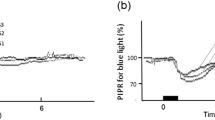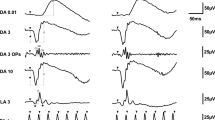Abstract
The clinical progression of the cataract may be influenced by drugs which reduce the denaturation of lens proteins. One of the most promising drugs is the bendazac-lysine salt. The drug was used in a double-blind study of a group of patients with initial cortical cataract in order to evaluate the changes in visual acuity and contrast sensitivity by means of a psychophysical and an electrophysiological method. After 6 months of treatment with bendazac the mean values of visual acuity showed a statistically significant increase in respect to baseline values, as well as an improvement of the threshold of contrast for most spatial frequencies. In the eyes treated with placebo there was no statistical difference between the visual acuity at baseline and after the treatment, but an increase of the contrast threshold for many spatial frequencies. The treatment with bendazac, when compared to the administration of placebo, leads to a statistically significant improvement of the contrast threshold and induces a global improvement on the visual conditions.
Similar content being viewed by others
References
François, J, Rabaey, M, Stockmans, SL. Gel filtration of the soluble proteins from normal and cataractous human lenses. Exp Eye Res 1965; 4: 312–8.
Spector, A, Li, S, Sigelman, J. Age-dependent changes in the molecular size of human lens proteins and their relationship to light scatter. Invest Ophthalmol 1974; 13: 795–98.
Jedziniak, JA, Kinoshita, J, Yates, EM, Hocker, LO, Benedek, GB. On the presence and mechanism of formation of heavy molecular weight aggregates in human normal and cataractous lenses. Exp Eye Res 1973; 15: 185–92.
Coghlan, SD, Augusteyn, RC. Changes in the distribution of proteins in the aging human lens. Exp Eye Res 1977; 25: 603–11.
Silvestrini, B. Rationale for bendazac. Proc XXVth Int Congr Ophthalmol. Amsterdam: Kugler, 1987: 2517–24.
Testa, M, Iuliano, G, Silvestrini, B. Pilot study of bendazac for treatment of cataract. Lancet 1982; i: 849–50.
Bonomi, L, Marchini, C, De Franco, I, Perfetti, S, De Gregorio, M. Bendazac lysine salt in treatment of cataracts: a controlled study. Curr Ther Res 1983; 33: 727–32.
Mannucci, LL, Doro, D, Angi, MR. Valutazione clinica del bendazac-lisina nella terapia della cataratta presenile e senile. Boll Oculist 1983; 62: 95–103.
Iuglio, N, Iuliano, G. The effect of bendazac-lysine salt on cataractous human eyes. Curr Ther Res 1984; 35: 119–22.
Recupero, SM, Librando, A, Mannino, G. Valutazione clinica sull'impiego della Bendalina nella terapia della cataratta. Clin Oculist Patol Ocul 1984; 4: 301–6.
Libutti, G, Pannarale, L. L'impiego della Bendalina nella terapia della cataratta senile. Valutazione clinica dei risultati ottenuti dopo un anno di terapia. Boll Oculist 1985; 64: 645–57.
Sanders, DR, De Gregorio, M, Pioggia, M. Bendazac-lysine (Bendalina) as an anticataract agent: review of basic clinical data. Proc XXVth Int Congr Ophthalmol. Amsterdam: Kugler, 1987: 2488–94.
Courtis, JM. Clinical experience with bendazac-lysine in the treatment of cataract. Proc XXVth Int Congr Ophthalmol. Amsterdam: Kugler, 1987: 2363–66.
Maione, M, Carnevali, R, Berardi, D, Delfini, B. Variazioni della sensibilità al contrasto in pazienti catarattosi trattati con Bendalina. Ann Ottalmol Clin Oculist 1984; 110: 959–66.
Hess, R, Garner, L. The effect of corneal edema on visual function. Invest Ophtalmol Vis Sci 1977; 16: 5–13.
Hess, R, Woo, G. Vision through cataracts. Invest Ophthalmol Vis Sci 1978; 17: 428–35.
Ponte, F, Giuffrè, G. Uso dei metodi elettrofisiologici nella determinazione della sensibilità al contrasto nella cataratta. Proc 2nd IACRR Int Congr. Palermo: STASS, 1988; 169–75.
Author information
Authors and Affiliations
Rights and permissions
About this article
Cite this article
Ponte, F., Giuffrè, G. & Cuttitta, A. Psychophysical and electrofunctional contrast sensitivity in cataractous patients treated with bendazac-lysine salt. Doc Ophthalmol 76, 285–296 (1990). https://doi.org/10.1007/BF00142688
Accepted:
Issue Date:
DOI: https://doi.org/10.1007/BF00142688




